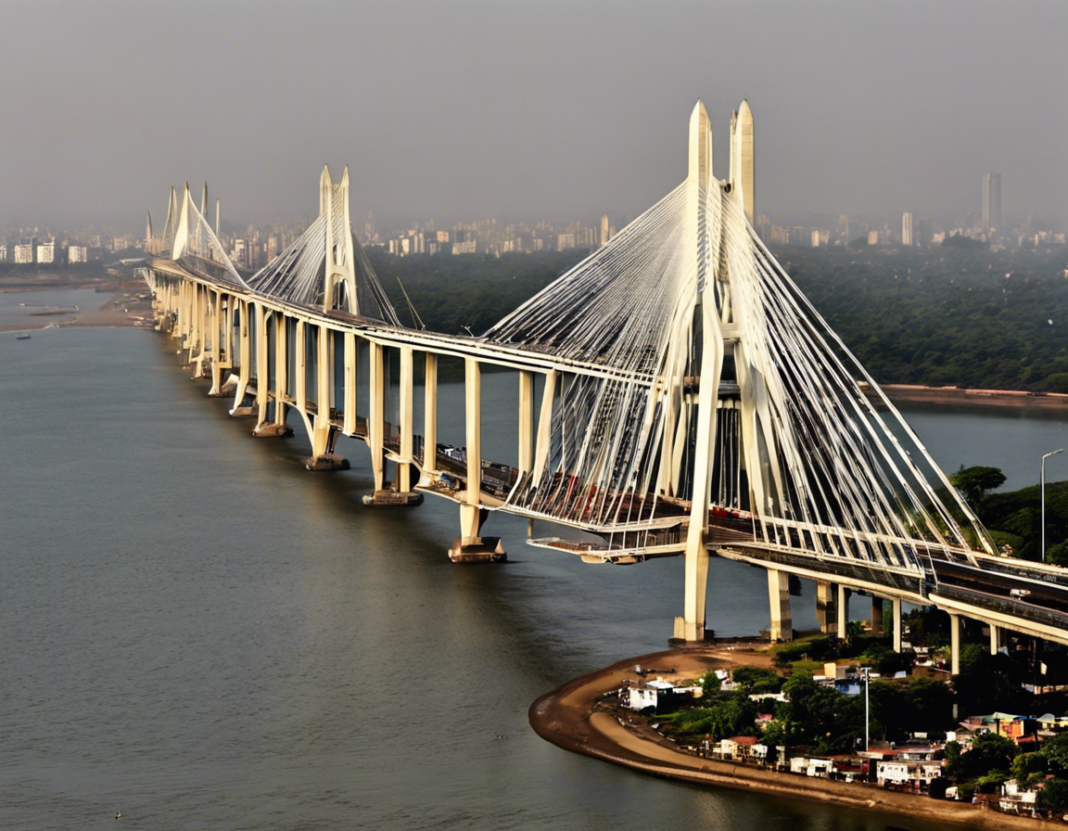Introduction
Mumbai, the bustling metropolis known as the “City of Dreams,” is not only a hub of finance, entertainment, and culture but also home to some spectacular engineering marvels. One such architectural wonder that has captivated locals and tourists alike is the Mumbai Atal Setu Bridge.
History and Significance
The Mumbai Atal Setu Bridge, officially known as the Versova Bandra Sea Link (VBSL), is a cable-stayed bridge that connects Versova in the western suburbs of Mumbai to Bandra in South Mumbai. The bridge serves as a crucial link that reduces travel time between the western and eastern suburbs of the city. Named after the former Prime Minister of India, Atal Bihari Vajpayee, the bridge stands as a symbol of modern infrastructure and engineering prowess in Mumbai.
Architecture and Design
The Mumbai Atal Setu Bridge is a stunning piece of engineering that spans across the Arabian Sea, offering breathtaking views of the Mumbai coastline. The bridge is designed as a cable-stayed structure, with cables extending diagonally from the towers to support the road deck. This design not only enhances the visual appeal of the bridge but also ensures its structural stability and strength in withstanding the forces of nature.
Key Features
- Length: The Mumbai Atal Setu Bridge spans a total length of approximately 1.5 kilometers, making it one of the longest bridges in Mumbai.
- Tower Height: The towering pylons of the bridge rise to a height of around 126 meters, adding to its grandeur and imposing presence.
- Lighting: The bridge is beautifully illuminated at night, creating a mesmerizing sight that has become a popular attraction for visitors.
- Traffic Capacity: The Mumbai Atal Setu Bridge is designed to handle a significant volume of vehicular traffic, providing a smoother commute for thousands of daily commuters.
- Seamless Connectivity: By connecting the western and eastern suburbs of Mumbai, the bridge has significantly reduced travel time and congestion on alternate routes, thereby improving overall connectivity in the city.
Tourist Attractions Nearby
- Bandra Worli Sea Link: Another iconic bridge in Mumbai, the Bandra Worli Sea Link offers stunning views of the Mumbai skyline and is a popular spot for tourists and photographers.
- Bandra Fort: A historic fort located near the Bandra end of the bridge, offering panoramic views of the Arabian Sea and the surrounding areas.
- Juhu Beach: One of Mumbai’s most famous beaches, located near the Versova end of the bridge, known for its vibrant atmosphere and delicious street food.
Frequently Asked Questions (FAQs)
- Is there a toll for using the Mumbai Atal Setu Bridge?
-
Yes, vehicles are required to pay a toll to use the bridge. The toll amount may vary for different types of vehicles.
-
Can pedestrians and cyclists access the bridge?
-
No, the Mumbai Atal Setu Bridge is exclusively for vehicular traffic, and pedestrian or cyclist access is not permitted.
-
What is the best time to visit the bridge for panoramic views?
-
Sunset and evening hours offer the best views of the illuminated bridge and the Mumbai skyline.
-
Are there any restrictions on photography on the bridge?
-
While photography for personal use is generally allowed, professional or commercial photography may require prior permission.
-
Is there parking available near the Mumbai Atal Setu Bridge?
- Limited parking facilities are available near both ends of the bridge, but it is advisable to use public transport or cab services to reach the bridge.
Conclusion
The Mumbai Atal Setu Bridge stands as a testament to Mumbai’s modern infrastructure development and architectural brilliance. With its stunning design, efficient connectivity, and strategic significance, the bridge has become an integral part of Mumbai’s skyline and a must-visit destination for tourists and locals alike. As you traverse this architectural marvel, take a moment to appreciate the seamless blend of engineering and aesthetics that defines the Mumbai Atal Setu Bridge.

